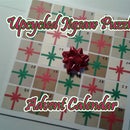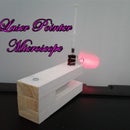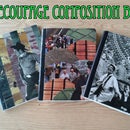Introduction: PVC Pan Flute
Back before every public space was packed with Andean pan flute bands of dubious provenance (Seriously, those guys down at Bay Walk are just Cubans in pork pie hats and woven vests!) Gheorghe Zamfir was the undisputed master of the pan flute. Don't believe me? Just see for yourself-
Wow that commercial takes me back- I can almost taste the Cap'n Crunch on a lazy cartoon filled Saturday morning. Any way, Zamfir was the most famous pan flute player in the world, but only because they blasted that commercial at us for years. He's probably the only pan flute player anyone knows by name.
Well this aint Zamfir's pan flute. Who wants hauntingly beautiful melodies? In the words of Dee Snyder, 'I wanna rock!', or at least make a racket.
Step 1: Making the Pipes
I made my pan flute from 1/2" diameter PVC water supply pipe. To get an estimate of the sizes I'd need, I cut a piece of pipe about 12" long, put my finger tightly over one end and blew across the edge of the open end. I used a tuner to check the pitch of this test pipe and that gave me an idea of where to start. It ended up being a few steps lower than my target key of E minor so I went ahead and cut the rest of my pipes, starting with 11" and getting a little shorter each time.
I cemented little squares of flat PVC to the ends of the pipes and let it set up. I sanded the ends round again on the belt sander and then hand sanded each pipe.
Step 2: Tuning
I decided to tune this pan flute to the key of E minor to match my Rhumba Box and my tongue drum. I used a guitar tuner and microphone to tune the pipes. This is really easy- the shorter the pipe is, the higher the note it will produce. I started with the longest pipe and alternated checking the pitch and sanding a bit off the end with the belt sander until I had it tuned to just below E. I hand sanded it to bring it up to E. I continued with the next pipe, tuning it to F#, then the next one at G, and so on. The E minor Scale is E, F#, G, A, B, C, D and E again. I tuned all 8 pipes. I also took the time to round off the outer top edge a bit where it would touch my lips. This makes the flute much more comfortable to play.
If you mess up and tune a pipe too high, just use it for a higher note and start over with a new one for your current target pitch. PVC is cheap- don't settle for an out of tune pipe!
Step 3: Assembling the Pan Pipes
I laid the pipes side by side in order from lowest to highest. I ran a strip of cement down the length of the pipe and pressed them together one by one. I took care to align the open top edges very carefully. When this was cured I cut two rectangles from flat PVC scraps and clamped and cemented them to the front and back of the pan flute. This will hold everything together making it a solid instrument.
Step 4: Painting
I sanded the whole flute and then wiped it down with an alcohol soaked rag. When it dried I sprayed it with an undercoat of Rustoleum claret wine spray paint. When that dried I shot another coat of Krylon hammered bronze textured paint. I hung the flute on a piece of threaded rod and let it dry completely.
Step 5: Finishing Touches
Since every project looks that much better with an Instructables Robot sticker I added one to my pan flute. Now it will sound even better!
pvcpanflute from chuck stephens on Vimeo.











